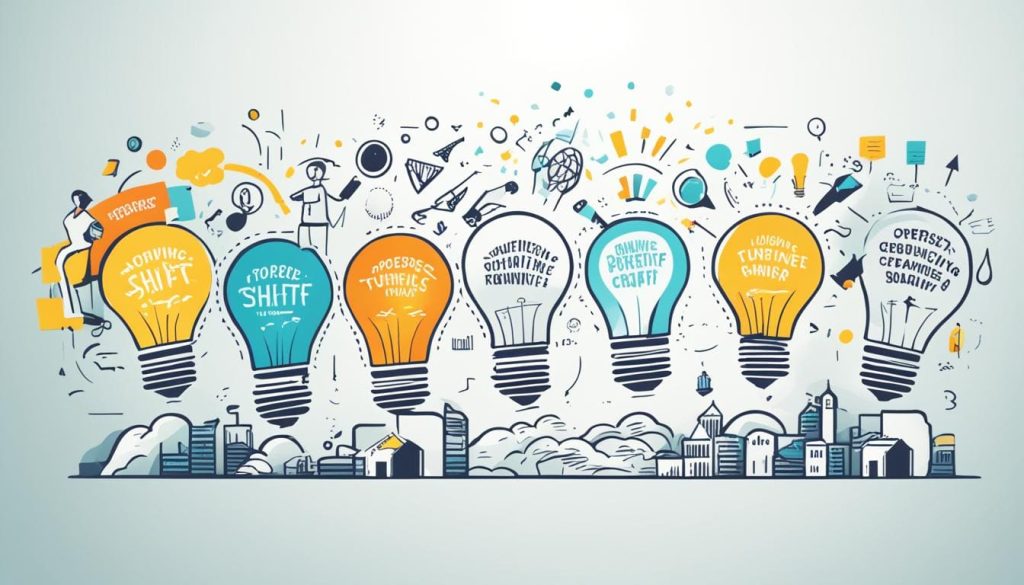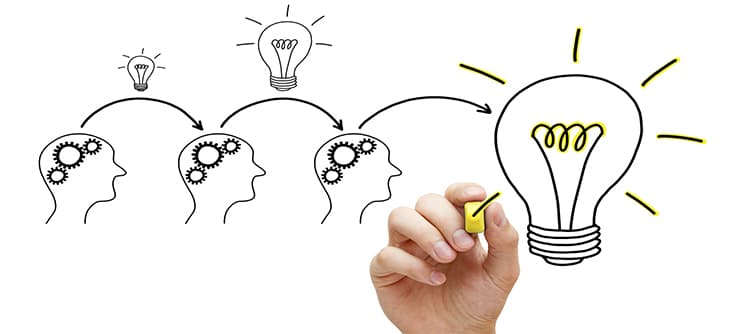In a rapidly changing world, waiting for inspiration is no longer enough to spark innovation. It’s now essential to know how to generate ideas systematically, quickly, and effectively.
In this guide, we will delve into the concept, steps, and real-world applications, and we will also present professional tools that will help you achieve tangible results quickly.
Why is reverse analysis a smart tool for developing ideas?
To begin with, reverse analysis isn’t simply about imitating what’s successful; it’s about understanding why that particular thing worked.
When you dissect a product or idea to see how it works, you learn from real-world experience rather than relying on assumptions.
In addition, reverse analysis allows you to:
Extracting the essential success factors for any project.
Identify weaknesses and opportunities that can be turned into a competitive advantage.
Reducing the risks of innovation by relying on proven facts.
Accelerating the development cycle thanks to a deeper understanding of the components and the relationships between them.
Stimulating creative thinking by rearranging elements in new and innovative ways.
As a result, reverse analysis becomes a bridge between learning from the market and evidence-led innovation.
The difference between reverse analysis and direct transcription
People often confuse reverse analysis with verbatim transcription, but there is a fundamental difference.
While copying merely replicates an idea, reverse analysis deconstructs it to understand it and then reconstructs it in an original way.
Thus, reverse analysis becomes a source of inspiration rather than a tool for imitation.
Practical examples illustrating the power of reverse analysis in developing ideas
For example:
In the technology sector, companies use reverse engineering to simplify user interfaces in their applications, based on best practices from competitors.
In industrial design, production engineers can reduce the cost of parts without sacrificing quality after studying successful designs.
In marketing, creative teams rely on analyzing effective campaigns to extract the most impactful message elements.
In business models, entrepreneurs adapt successful pricing structures to suit new markets.
Therefore, reverse analysis proves to be a flexible approach that can be applied in almost any sector.
A practical guide to applying reverse analysis to develop ideas
1. Define the goal clearly.
Before taking any steps, ask yourself: What do I want to achieve with reverse analysis?
Are you aiming to reduce costs? Improve the user experience? Or develop a new feature?
The more precisely you define your goal, the clearer the path and the more accurate the results.
2. Choose the appropriate model for analysis.
It is essential to choose a successful model that has achieved real results.
For example, Choose a product with high ratings or a proven business model.
In addition, make sure that the chosen model is applicable in your local or industry context.
3. Collect data and information
On the other hand, analysis cannot succeed without accurate data.
Therefore, gather all available information you can: reports, reviews, presentations, interface images, financial data, and even user interviews.
The more data sources you have, the deeper and more effective the analysis becomes.
4. Disassemble the components intelligently
After gathering the information, break the model down into parts: user experience, technology, operations, revenue model, pricing, and support.
Next, ask analytical questions such as: Why was this element chosen? What outcome does it achieve? How can it be improved?
In this way, the analysis transforms into a precise roadmap for understanding and inspiration.
5. Identify the factors contributing to success and shortcomings.
Now, after examination, classify the observations into three categories:
Strong elements that must be preserved.
Weaknesses can be turned into opportunities.
Components that need redesigning.
As you review the results, make sure to prioritize based on both impact and cost.
6. Generate new ideas
At this stage, creativity comes into play.
Use techniques such as SCAMPER (replace, merge, modify, enlarge, use another, remove, rearrange).
For example, If you notice that a product uses a complex interface, consider simplifying it or redesigning it with a clearer visual language.
Thus, you generate dozens of testable ideas.
7. Test the prototypes
It is important not to wait for the final product to begin testing.
Instead, create a simple prototype to quickly test your hypotheses.
You can also try small A/B or MVP tests to gather real-world feedback.
This way, you save months of work and learn faster.
8. Implement and repeat the improvement
Once you have selected the best version, start implementation and then monitor performance.
In each new development cycle, re-analyze to identify opportunities for continuous improvement.
With this iterative approach, you ensure that your product remains innovative and superior to the competition.
Tools to help you with reverse analysis to develop ideas
For effective implementation, you need the right tools.
The most prominent ones are as follows:
Market analysis: Google Trends, SimilarWeb, AppAnnie.
User experience analysis: Hotjar, Maze, FullStory.
Technical Reverse Engineering: Ghidra, IDA Pro (in compliance with the laws).
Financial analysis: Excel, Power BI.
Design and modeling: Figma, Sketch, SolidWorks.
Moreover, Remember that some technical tools may be subject to legal restrictions, so consult with experts before using them.
Legal and ethical framework
To stay on the safe side, you must always respect intellectual property.
In other words, use reverse engineering to learn, not to copy.
Therefore, consult a legal advisor if the project relies on patented products.
While you are working, respect user privacy and make sure you comply with local and international laws.
Case studies
Case A: Simplifying the interface of a financial application
By analyzing the interface of a successful competitor, the team discovered elements that caused confusion among users.
After the redesign, the abandonment rate decreased by 32% during the first three months.
Case B: Reducing the cost of an industrial product
After disassembling the components and reviewing the manufacturing processes, the team came up with cheaper and more efficient alternatives.
As a result, the cost decreased by 18% while maintaining quality.
Case C: Improving the subscription model
By studying a global model, the local team reformulated the pricing and introduced a free trial period.
Thus, the conversion rate increased by 24%.
Tips to avoid mistakes
To get the most benefit, keep the following in mind:
Do not start with verbatim copying, no matter how tempting it may be.
Rely on data, not impressions.
Always test with end users.
Seek expert assistance in complex technical fields.
Quick Action Checklist
Setting the goal.
Choosing the right model.
Data collection.
Disassemble and analyze the components.
Identifying strengths and weaknesses.
Generating new ideas.
A quick preliminary test.
Evaluate the results.
Applying the best solution.
Iterative improvement.
Integrating reverse analysis into a culture of innovation
In general, reverse analysis is not limited to individual projects.
It becomes more powerful when it is integrated into the organization’s culture.
Therefore, it is beneficial to dedicate monthly sessions to analyzing market products and building an internal library of lessons learned.
It is also advisable to enhance cooperation between different departments and encourage teams to put forward ideas resulting from the analysis.
Frequently asked questions
Is reverse analysis legal?
Yes, as long as intellectual property rights or trade secrets are not violated.
Do I need engineers?
Not always, it depends on the type of product.
How long does it take to implement?
Initial results may appear within a few weeks, while larger projects require months.
30-day action plan
Week 1: Setting the goal and gathering resources.
Week 2: Analyzing the components and drawing lessons.
Week 3: Generating ideas and choosing the most suitable one.
Week 4: Testing and final analysis of results.
Ultimately, reverse analysis of ideas development allows you to transform observation into creativity, and experience into strategy.
By applying this approach, you can Accelerating innovation, reducing risks, and building a sustainable competitive advantage .
A glimpse of Reins
At Reins, we believe that innovation doesn’t happen by chance, but rather through intelligent analysis and systematic planning.
Therefore, we offer advanced training and consulting programs that help management teams, academics, and business owners practically apply reverse analysis to develop innovative products and strategies.
If you want to transform your idea into a fully-fledged, scientifically grounded project, we’re here to guide you every step of the way.
✨ Start your journey towards smart innovation today with Reins — where ideas become achievements.













